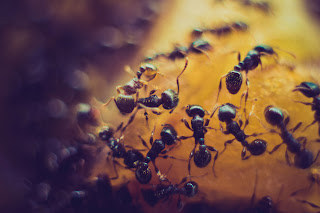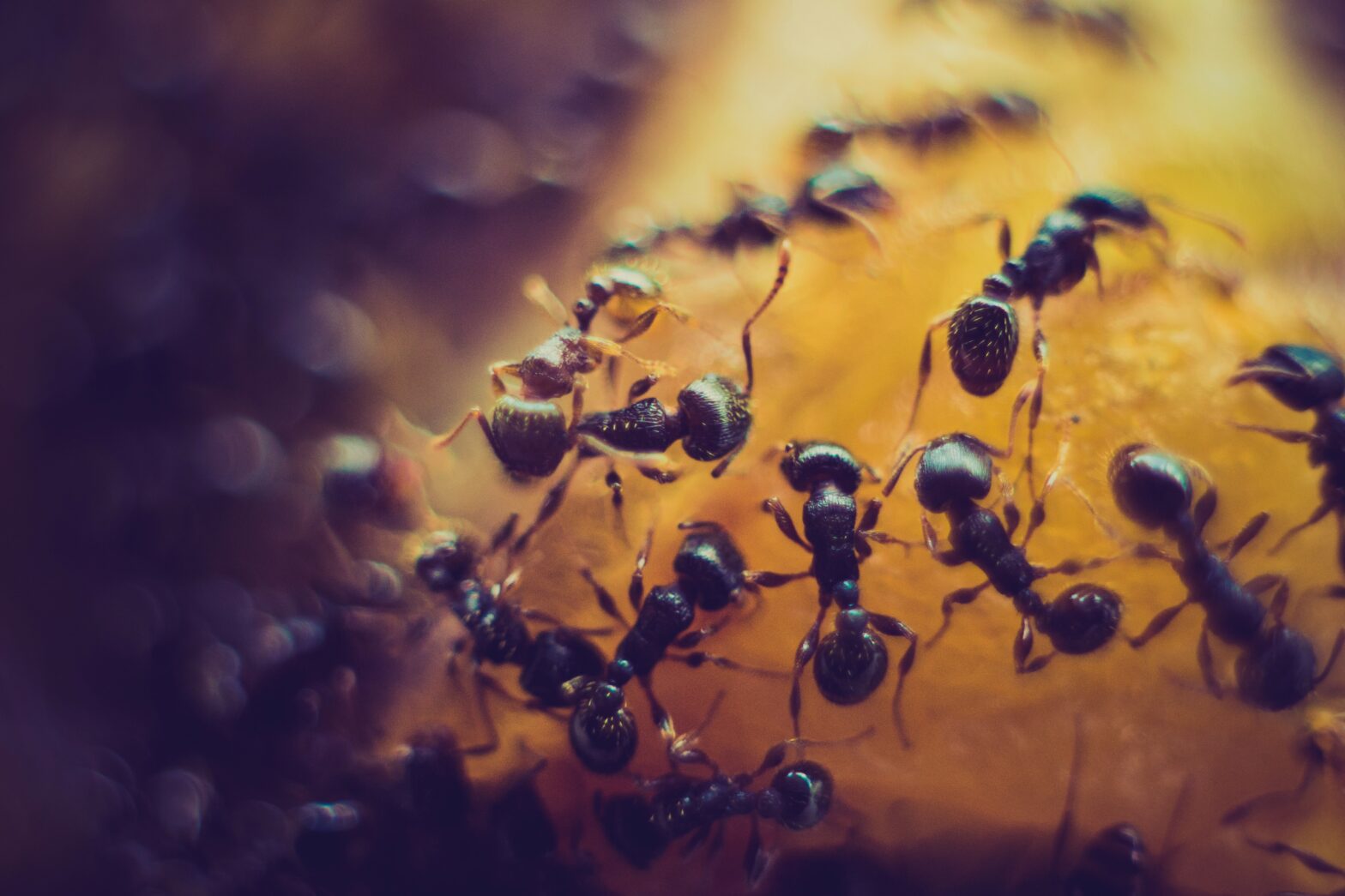Ants set scent trails to map out the fastest routes, using communication to solve problems when trails are disturbed or blocked. Ants share, and they are built for cooperating. They walk and talk, collaborating in all they do. Ants solve problems by communicating. Ants have two stomachs, with the second one set aside for storing food for sharing with other ants. They get pretty intimate when meeting each other.
The ants kiss, but this kiss isn’t any ordinary kind of kiss. Instead, they regurgitate food, exchanging it with one another. Sharing saliva and food, ants communicate. It is vital to their social intelligence because ants solve problems by communicating.
Ant social media
In addition, all ants can produce pheromones, scent chemicals used for communication, and marking trails. Each ant colony has a unique smell, so members recognize each other and sniff out intruders. By exchanging food and scent, ants consolidate their connection.

Ants are problem solvers. We may recall the problems puzzles we were given as children. We look to see if the pieces will fit. Jigsaw puzzles are much the same but with many contextual factors. First, the picture tells a story. Then, once we know what the image might be, it becomes easier to see which pieces to look for.
Ant trails
Ants lay down trails. Just as we follow well-trodden paths in our country walks, so ants follow the scented trails they mark out. They present a maze of possible routes, but the most well-trodden tracks carry their greatest scent over time.
These avenues are a bit like the internet created by the colony. When foraging for food, ants will prefer the shortest possible route. Scouts will explore alternative avenues. Ants use communication to solve problems when their trails are disturbed.
Ants are creative in solving the problem. If their trails are blocked or disrupted, they reset them, recreating an internet of possible paths and re-establishing connectivity. While ants follow an algorithm in decisions, they create it. Ants create logic and make choices.
Sources: Journal of Experimental Biology
Photo by Salmen Bejaoui on Unsplash
Writer: Ray Noble is a chartered biologist

